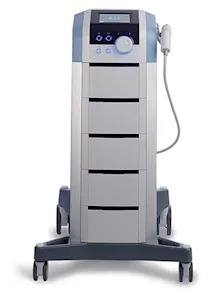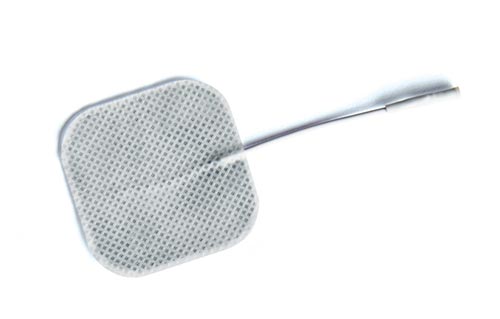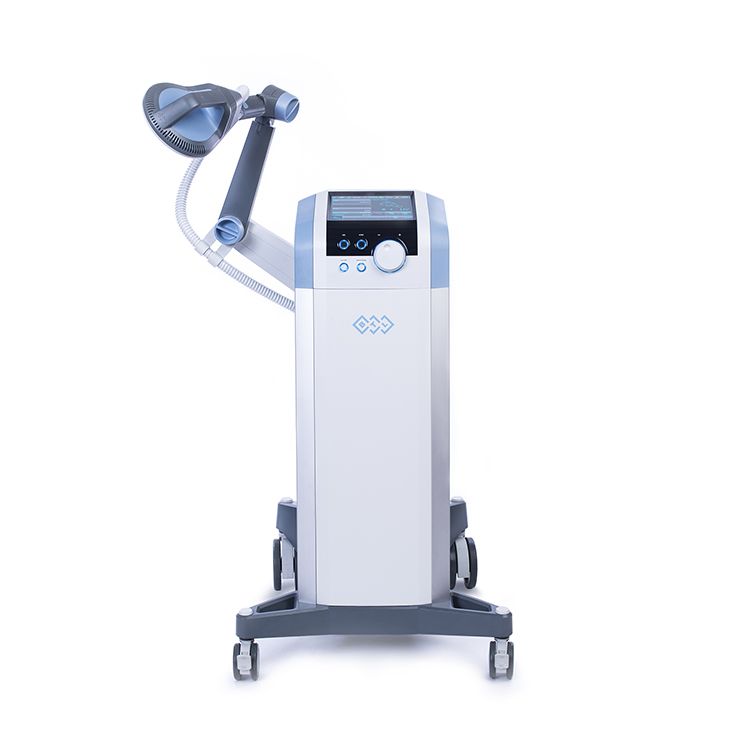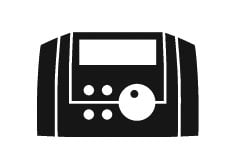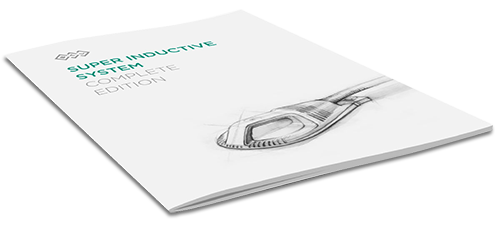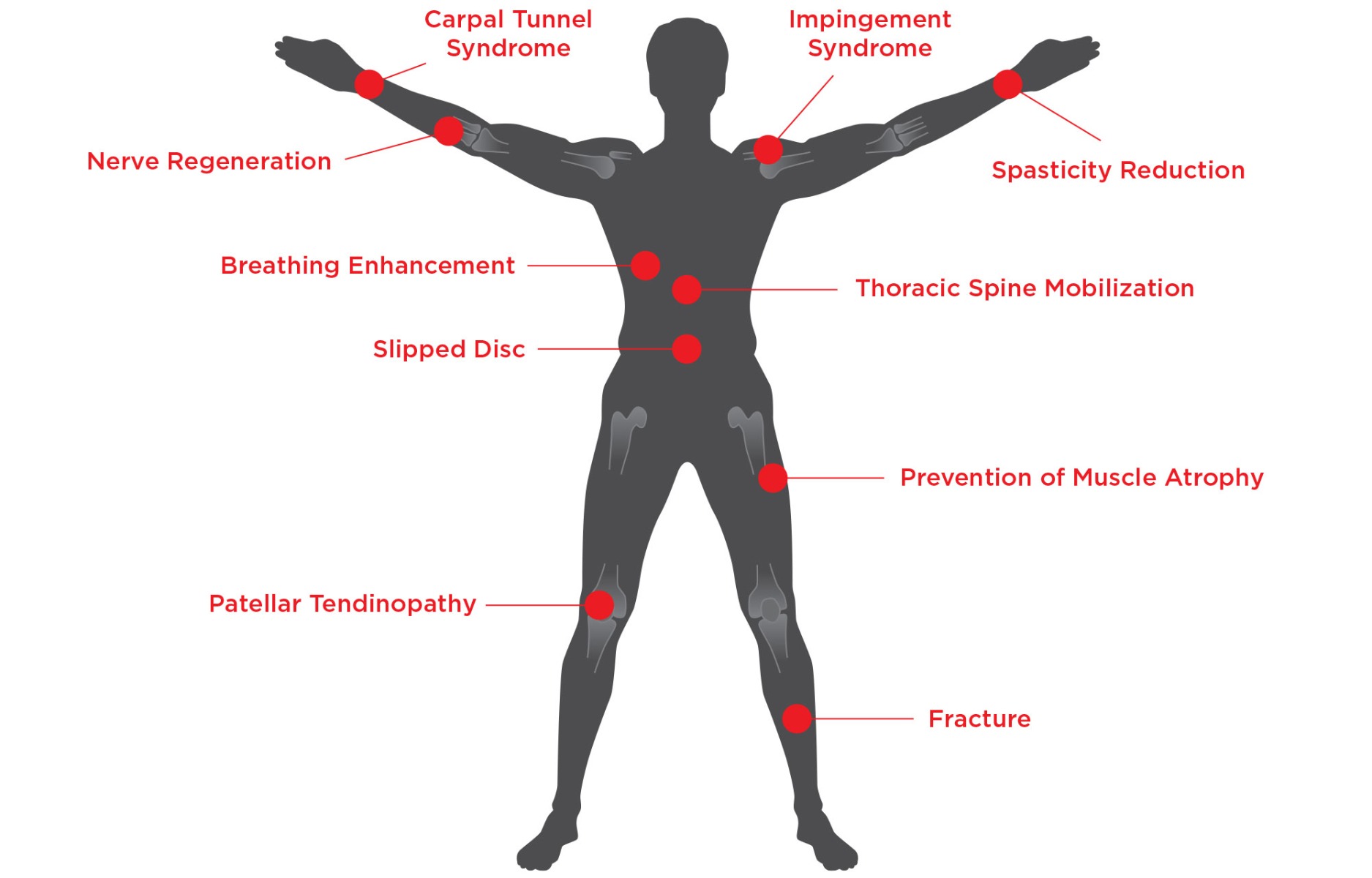BTL-6000 Super Inductive System - High Intensity Electromagnetic Field Stimulation
SKU: BTL-SIS
Sign up as a healthcare professional to save on shipping & benefit from volume discounts! — sign in / create account
Description
SETTING A NEW STANDARD FOR EFFECTIVE PAIN RELIEF
The Innovative BTL Super Inductive System creates a high intensity electromagnetic field of up to 2.5 Tesla that interacts with the human body to create depolarization of the nerves and muscles. Easy and quick to set up, this handsfree therapy effectively addresses acute and chronic pain, muscle tightness, weakness and spacticity, joint stiffness, and fractures. Health Canada approved. MDALL 98062
EFFECTIVE PAIN MANAGEMENT
The Super Inductive System (SIS) pain management is based on three different neurophysiological pain control theories. Each of them vary in frequency spectrum. The wide range of frequencies offered by the Super Inductive System allows the treatment of all painful conditions whether acute, sub-acute or chronic.
Endogenous Opioid Theory of Pain
2-10 Hz
Endorphins are endogenous opioids in humans, which are naturally released in response to pain. The secretion of analgesic opioids is achieved by stimulating nerve endings with the SIS using frequencies in the range of 2–10 Hz. The low frequency range is recommended for the treatment of chronic conditions.
Gate Control Theory of Pain
60-100 Hz
Pain is transferred to the brain interpretation center through nerve fibers and the ‘spinal gate’. Thin diameter nerve fibers open the spinal gate and carry pain signals to the brain. Large diameter nerve fibers close the spinal gate and prevent the passage of pain signals to the brain. When applying SIS treatment using frequencies in the range of 60–100 Hz, large diameter nerve fibers are stimulated. The mid frequency range is recommended for the treatment of acute and sub-acute conditions.
Peripheral Pattern Theory of Pain
120-140 Hz
Pain is sent as coded information through the peripheral nervous system to the brain interpretation center, where it is decoded and interpreted. When stimulating a painful area with SIS using high frequencies in the range of 120–140 Hz, the coded information is not interpreted as pain. The high frequency range is recommended for sub-acute conditions.
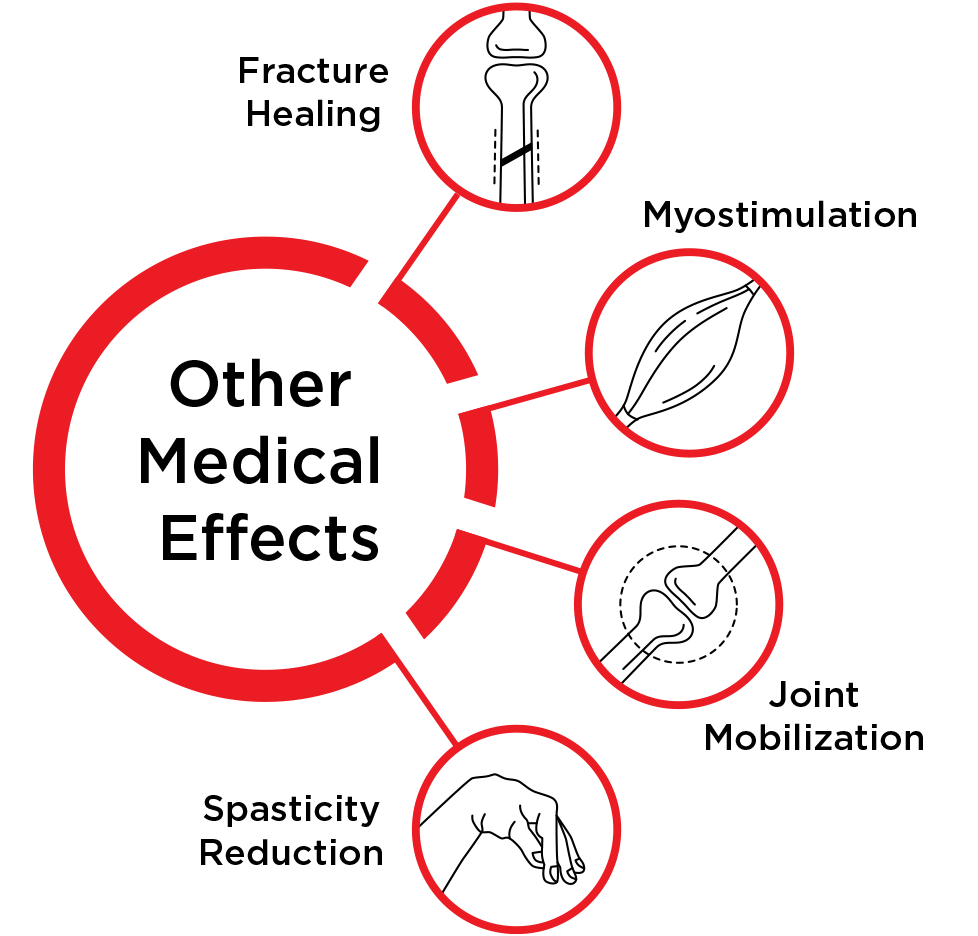
Fracture Healing
Increased blood flow to the injured area encourages the formation of the vascular and cartilage callus. Progressive cartilage mineralization and bone remodeling can begin.
Joint Mobilization
Achieved through creating repetitive muscle contractions. The contractions substitute manual joint mobilization and leads to the restoration of movement in the joint.
Myostimulation
Nerve depolarization and muscle contractions can be created with the SIS, and with the correct stimulation frequency, muscle strengthening can be achieved.
Spasticity Reduction
The SIS can be used to treat central motor impairment, causing spasticity, by inhibiting increased muscle tone through treating the spinal nerves.
Schedule a call with one of our specialists!
MOST ADVANCED FEATURES IN THE INDUSTRY
Hands-Free Therapy
& Fast Set Up
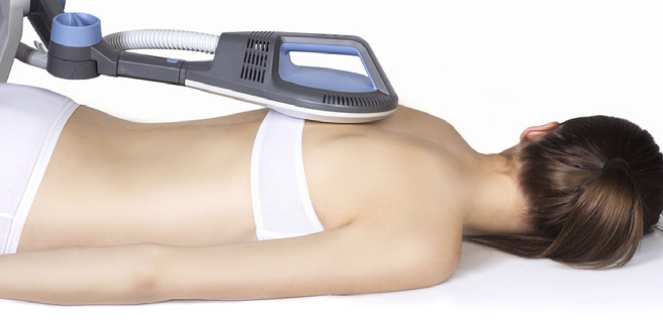
Precise Therapy Delivery with Depth of Penetration of up to 10 cm
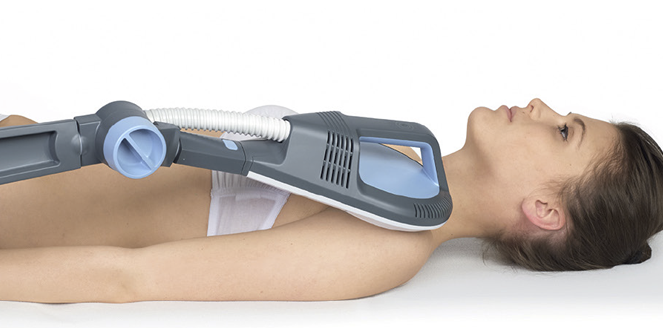
Cool Flow Technology & Pulse Quality Monitoring
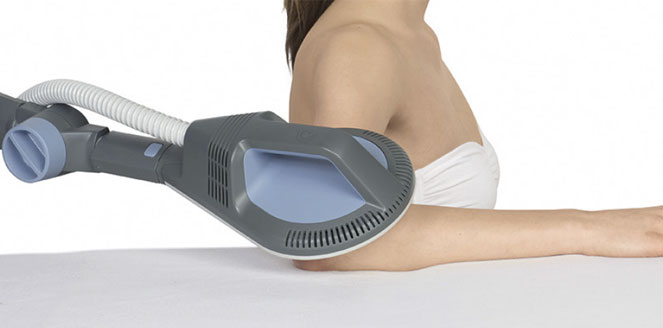
Focused Field of Treatment
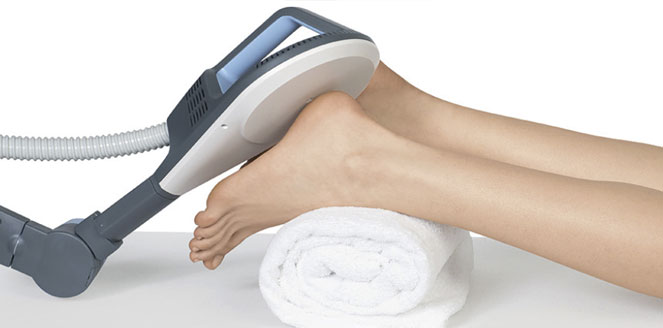
PHYSIOLOGICAL EFFECTS
The SIS therapy is based on the interaction between its high-intensity electromagnetic field and human body.
Once the electromagnetic field is generated by the applicator coil, neuromuscular tissue is depolarized and muscle contraction occurs. With the Super Inductive System you can effectively treat various disorders of neuromuscular and joint-skeletal system.
Action Potential
The BTL Super Inductive System (SIS) mechanism of action is based on the neurophysiological reaction called action potential.
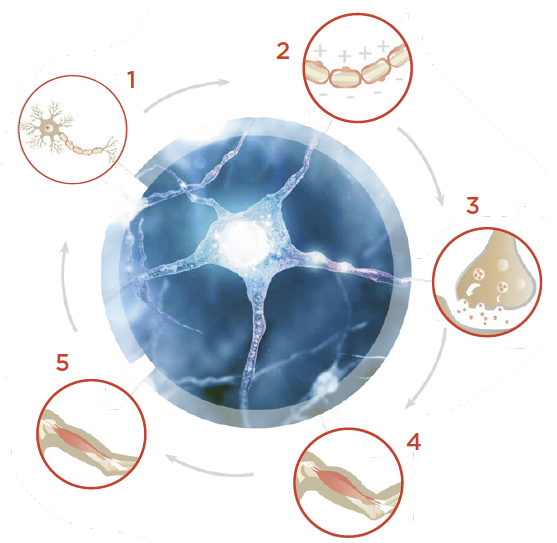
1. Introduction
The BTL SIS creates an intense electromagnetic field. The field induces electric currents and triggers action potential in the neuron, which further transfers the electric signal in neural tissue.
2. Depolarization
The Electric signal induced by the BTL SIS is further transferred through the neuron and depolarization, caused by the voltage changes on the neuron membrane, occurs
3. Signal Conduction & Repolarization
Induced electric signal is conducted along the neuron until the mediator acetylcholine is released into the neuromuscular joint.
4. Muscle Contraction
Acetylcholine binds to a muscle cell membrane and further conducts the induced electric signal through the muscle. This involves the activity of contractile proteins, which altogether cause muscle contraction.
5. Muscle Relaxation
Subsequently, cross-bridges of the contractile proteins are discontinued and the muscle relaxes.
SCIENTIFIC RESULTS
ARE THE REASON TO BELIEVE
Overall
decrease in pain by 37.5%
Clinical Study of Applied High-Induction Electromagnetic Field on Painful Conditions.
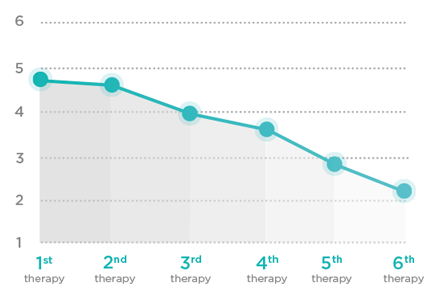
Improvement
described by 87% of the patients
Repetitive Peripheral Magnetic Stimulation as Pain Management Solution in Musculoskeletal and Neurological Disorders - A Pilot Study
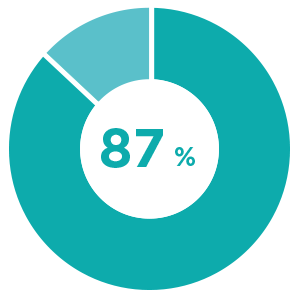
"The therapy is simple, comfortable and gentle to the patient."
EFTHIMIOS KOULOULAS
Medical Director, Rehabilitation Center Physiatriki
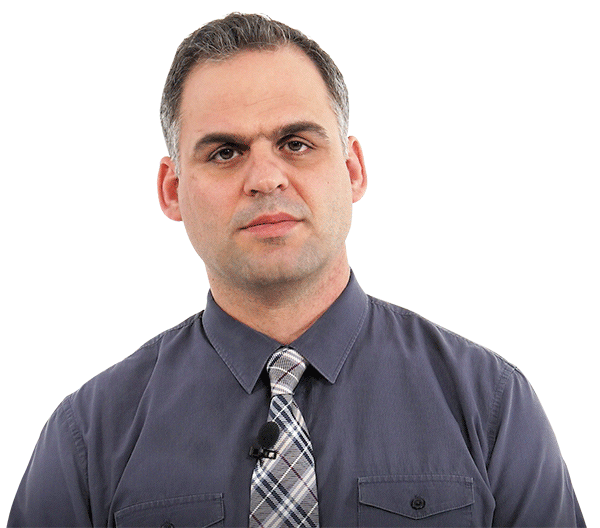
"SIS targets the deep lying structures, bringing the results such as pain relief or muscle relaxation"
TELMO FIRMINO
Physiotherapist, Sport Lisboa e Benfica


Lease for $3/day
Finance your success and benefit
from advanced technology for
as low as $3/day.
Learn More >

Training & Education
Gain valuable understanding about the BTL Super Inductive System and application techniques.
FAQ
How often should I treat patients with the BTL Super Inductive System?
The treatment time will be based on the patient presentation. The recommended frequency of treatment is up to daily but is usually 2-3x per week.
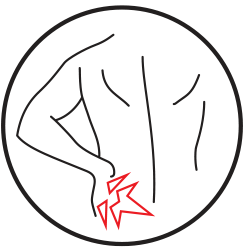
Acute pain condition up to 5 therapies, daily

Chronic pain condition up to 10 therapies, 2 - 3x/week
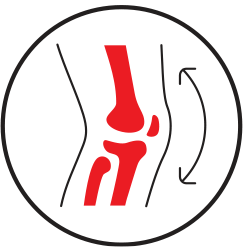
Joint mobilization up to 5 therapies, 1 - 2x/week

Fracture healing up to 10 therapies, min 3x/week

Muscle strengthening up to 10 therapies, 2 - 3x/week

Muscle relaxation up to 5 therapies, 2 - 3x/week
What are the contraindications?
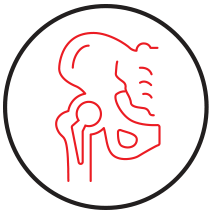
Any implants (electronic, metal etc.)
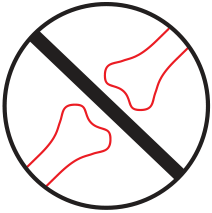
Growth plate area
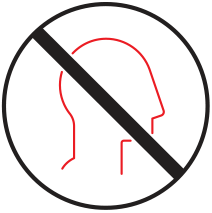
Head area
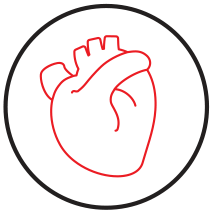
Heart area, heart & blood disorders
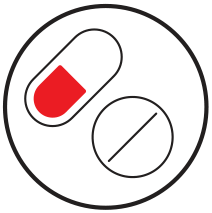
Drug pumps

Malignant tumor
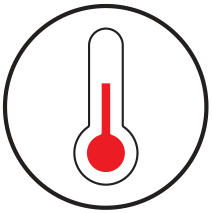
Fever
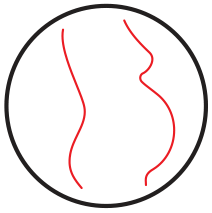
Pregnancy
How is the BTL Super Inductive System different from regular electrotherapy/IFC?
This is a very common question, with lots of right answers. The BTL SIS differs from Electrotherapy on several levels.
• Higher depth of penetration of up to 10 cm
• Handsfree therapy
• No tissue adaptation
• Can treat over clothing
• The human body creates the electric current in depth with the use of the SIS, whereas the electric current is created by the modality with electrotherapy
• No need for skin contact, minimizing the risk of infection
• No consumables required
How is the BTL Super Inductive System different from regular magnetotherapy?
Power! The BTL SIS has a power output of up to 2.5 Tesla, compared to magnetotherapy that uses intensity measured in tens of microTesla. Due to the low output of magnetotherapy, you can never achieve nerve depolarization, or muscle contraction. This limits the use of magnetotherapy,
when compared to the BTL Super Inductive System.
SETTING A NEW STANDARD FOR EFFECTIVE PAIN RELIEF
The Innovative BTL Super Inductive System creates a high intensity electromagnetic field of up to 2.5 Tesla that interacts with the human body to create depolarization of the nerves and muscles. Easy and quick to set up, this handsfree therapy effectively addresses acute and chronic pain, muscle tightness, weakness and spacticity, joint stiffness, and fractures.
Health Canada approved. MDALL 98062
EFFECTIVE PAIN MANAGEMENT
The Super Inductive System (SIS) pain management is based on three different neurophysiological pain control theories. Each of them vary in frequency spectrum. The wide range of frequencies offered by the Super Inductive System allows the treatment of all painful conditions whether acute, sub-acute or chronic.
Endogenous Opioid Theory of Pain
2-10 Hz
Endorphins are endogenous opioids in humans, which are naturally released in response to pain. The secretion of analgesic opioids is achieved by stimulating nerve endings with the SIS using frequencies in the range of 2–10 Hz. The low frequency range is recommended for the treatment of chronic conditions.
Gate Control Theory of Pain
60-100 Hz
Pain is transferred to the brain interpretation center through nerve fibers and the ‘spinal gate’. Thin diameter nerve fibers open the spinal gate and carry pain signals to the brain. Large diameter nerve fibers close the spinal gate and prevent the passage of pain signals to the brain. When applying SIS treatment using frequencies in the range of 60–100 Hz, large diameter nerve fibers are stimulated. The mid frequency range is recommended for the treatment of acute and sub-acute conditions.
Peripheral Pattern Theory of Pain
120-140 Hz
Pain is sent as coded information through the peripheral nervous system to the brain interpretation center, where it is decoded and interpreted. When stimulating a painful area with SIS using high frequencies in the range of 120–140 Hz, the coded information is not interpreted as pain. The high frequency range is recommended for sub-acute conditions.

Fracture Healing
Increased blood flow to the injured area encourages the formation of the vascular and cartilage callus. Progressive cartilage mineralization and bone remodeling can begin.
Myostimulation
Nerve depolarization and muscle contractions can be created with the SIS, and with the correct stimulation frequency, muscle strengthening can be achieved.
Joint Mobilization
Achieved through creating repetitive muscle contractions. The contractions substitute manual joint mobilization and leads to the restoration of movement in the joint.
Spasticity Reduction
The SIS can be used to treat central motor impairment, causing spasticity, by inhibiting increased muscle tone through treating the spinal nerves.
Schedule a call with one of our specialists!
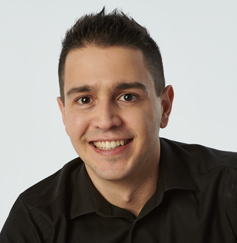
Razi Khaddage, B. Eng
Director of Capital Equipment Sales & Service
1-800-561-0310 ext 1704
razi.khaddage@orthocanada.com
MOST ADVANCED FEATURES IN THE INDUSTRY
Hands-Free Therapy
& Fast Set Up

Precise Therapy Delivery with Depth of
Penetration of up to 10 cm

Cool Flow Technology & Pulse Quality Monitoring

Focused Field of Treatment

Most Powerful Device
Intensity of up to 2.5 Tesla.
Set & Go Therapy
The device offers a wide range of preset protocols applicable for any condition.
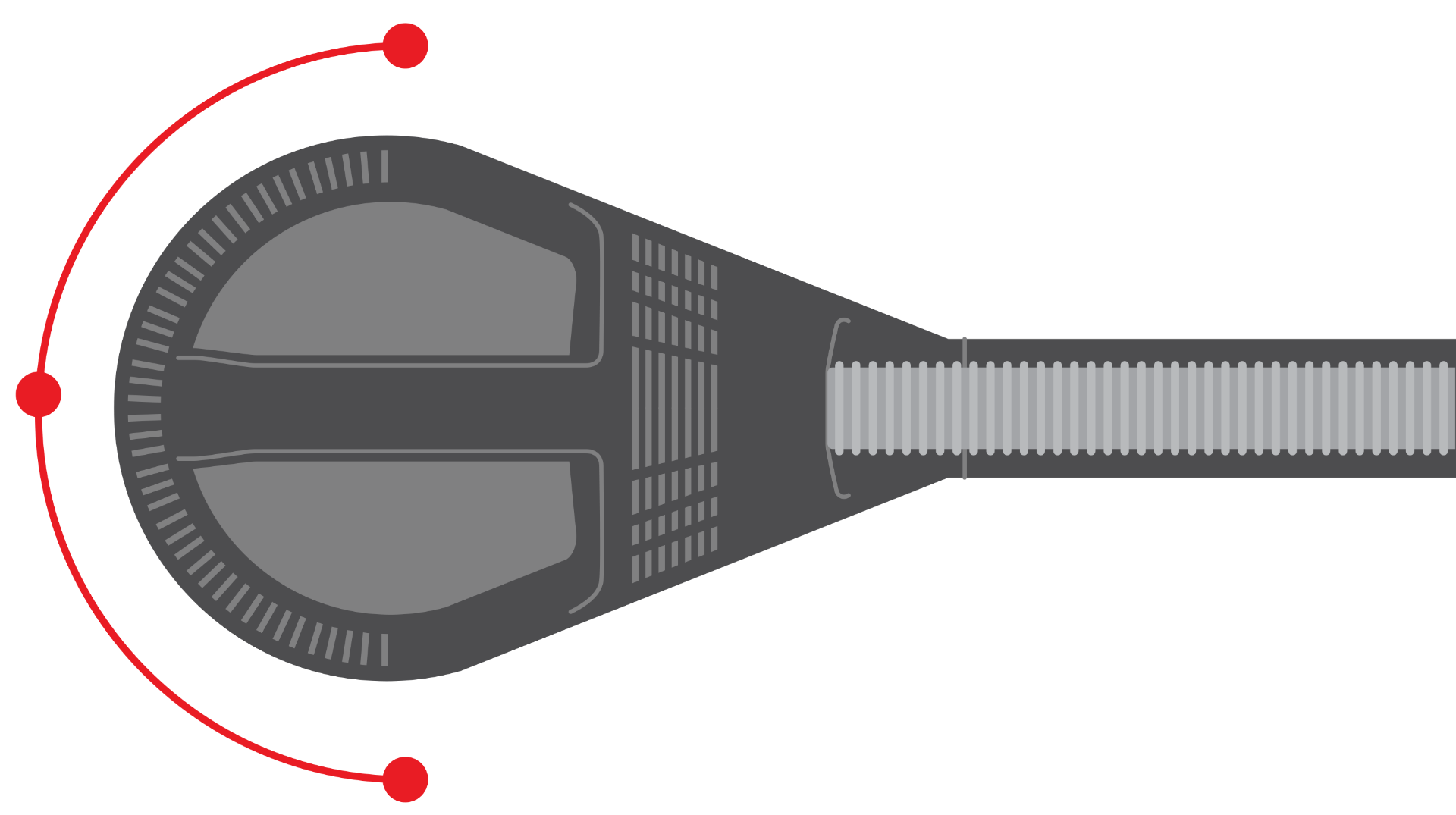
No Consumables, No Disposables
The BTL Super Inductive System represents a cost-effective solution.
PHYSIOLOGICAL EFFECTS
The SIS therapy is based on the interaction between its high-intensity
electromagnetic field and human body.
Once the electromagnetic field is generated by the applicator coil, neuromuscular tissue is depolarized and muscle contraction occurs. With the Super Inductive System you can effectively treat various disorders of neuromuscular and joint-skeletal system.
Action Potential
The BTL Super Inductive System (SIS) mechanism of action is based on the neurophysiological reaction called action potential.

1. Introduction
The BTL SIS creates an intense electromagnetic field. The field induces electric currents and triggers action potential in the neuron, which further transfers the electric signal in neural tissue.
3. Signal Conduction & Repolarization
Induced electric signal is conducted along the neuron until the mediator acetylcholine is released into the neuromuscular joint.
5. Muscle Relaxation
Subsequently, cross-bridges of the contractile proteins are discontinued and the muscle relaxes.
2. Depolarization
The Electric signal induced by the BTL SIS is further transferred through the neuron and depolarization, caused by the voltage changes on the neuron membrane, occurs.
4. Muscle Contraction
Acetylcholine binds to a muscle cell membrane and further conducts the induced electric signal through the muscle. This involves the activity of contractile proteins, which altogether cause muscle contraction.
SCIENTIFIC RESULTS
ARE THE REASON TO BELIEVE
Overall decrease in pain
by 37.5%
Clinical Study of Applied High-Induction Electromagnetic Field on Painful Conditions.

Improvement
described by 87%
of the patients
Repetitive Peripheral Magnetic Stimulation as Pain Management Solution in Musculoskeletal and Neurological Disorders - A Pilot Study

"The therapy is simple, comfortable and gentle to the patient."
EFTHIMIOS KOULOULAS
Medical Director, Rehabilitation Center Physiatriki

"SIS targets the deep lying structures, bringing the results such as pain relief or muscle relaxation"
TELMO FIRMINO
Physiotherapist, Sport Lisboa e Benfica


Lease for $3/day
Finance your success and benefit
from advanced technology for
as low as $3/day.
Learn More >

Training & Education
Gain valuable understanding about the BTL Super Inductive System and application techniques.
FAQ
How often should I treat patients with the BTL Super Inductive System?
The treatment time will be based on the patient presentation. The recommended frequency of treatment is up to daily but is usually 2-3x per week.

Acute pain condition up to 5 therapies, daily

Chronic pain condition up to 10 therapies, 2 - 3x/week

Muscle strengthening up to 10 therapies, 2 - 3x/week

Muscle relaxation up to 5 therapies, 2 - 3x/week

Joint mobilization up to 5 therapies, 1 - 2x/week

Fracture healing up to 10 therapies, min 3x/week
What are the contraindications?

Any implants (electronic, metal etc.)

Growth plate area

Head area

Heart area, heart & blood disorders

Drug pumps

Malignant tumor

Fever

Pregnancy
How is the BTL Super Inductive System different from regular electrotherapy/IFC?
This is a very common question, with lots of right answers. The BTL SIS differs from Electrotherapy on several levels.
• Higher depth of penetration of up to 10 cm
• Handsfree therapy
• No tissue adaptation
• Can treat over clothing
• The human body creates the electric current in depth with the use of the SIS, whereas the electric current is created by the modality with electrotherapy
• No need for skin contact, minimizing the risk of infection
• No consumables required
How is the BTL Super Inductive System different from regular magnetotherapy?
Power! The BTL SIS has a power output of up to 2.5 Tesla, compared to magnetotherapy that uses intensity measured in tens of microTesla. Due
to the low output of magnetotherapy, you can never achieve nerve depolarization, or muscle contraction. This limits the use of magnetotherapy,
when compared to the BTL Super Inductive System.
A SOLUTION FOR ANY OF YOUR PATIENTS
Energy
Divergent acoustic wave
Convergent acoustic wave
Laser light
Radiofrequency current
Electromagnetic field
Mechanism of Action
Superficial mechanical stimulation
Deep mechanical stimulation
Laser biostimulation
Thermic effect
Nerve depolarization
Key tissue
Tendon, muscle
Tendon, muscle, bone
Cellular repair
Muscle
Nerve
Medical effect
Activates healing process in tendinopathies, elimination of calcifications, releases tight muscles, chronic pain management
Activates healing process in tendinopathies, elimination of calcifications, releases tight muscles, chronic pain management, healing of bone non-unions
Healing of acute injuries, anti-inflammatory effect, acute pain management
Muscle spasm relaxation, muscle regeneration, eliminates oedema
Pain management, joint mobilization, muscle stimulation and relaxation, spasticity reduction and fracture healing
Penetration depth
Up to 5 cm, maximum Intensity at surface with superficial spread
Adjustable depth of focal zone within range 0-35 mm, 15-50 mm, 30-65 mm with maximum intensity at selected depth
Up to 10 cm
Anywhere between electrodes
Up to 10 cm
Application
Manual
Manual
Manual or handsfree with optional Intelligent Scanning System
Manual
Handsfree
Patient perception
Pressure sensation to mild discomfort
Pressure sensation to mild discomfort
Intense heat
Intense heat
Muscle contraction or tingling
Consumables
Gel
Gel
N
Conduction lotion, single-use electrode (optional)
None
Number of treatments
4 to 8
3 to 5
5 to 10
5 to 10
5 to 10
Application frequency
Up to twice a week
Once a week
Up to daily
Up to daily
Up to daily
Treatment duration
10 min
5 min
5 to 15 min
Minimum 15 min
Up to 10 min




















